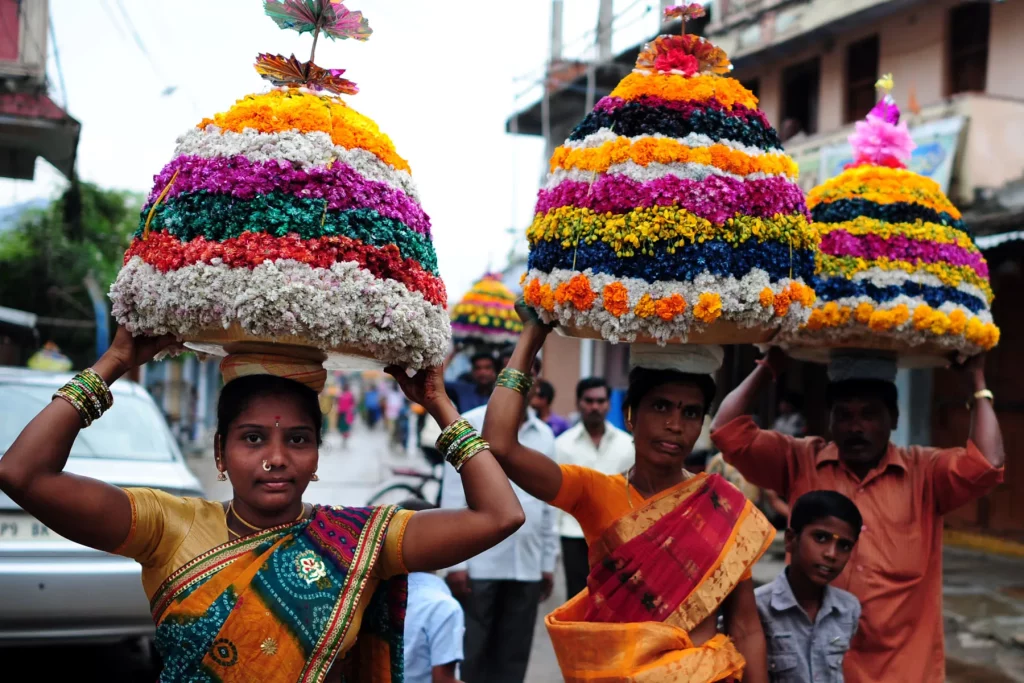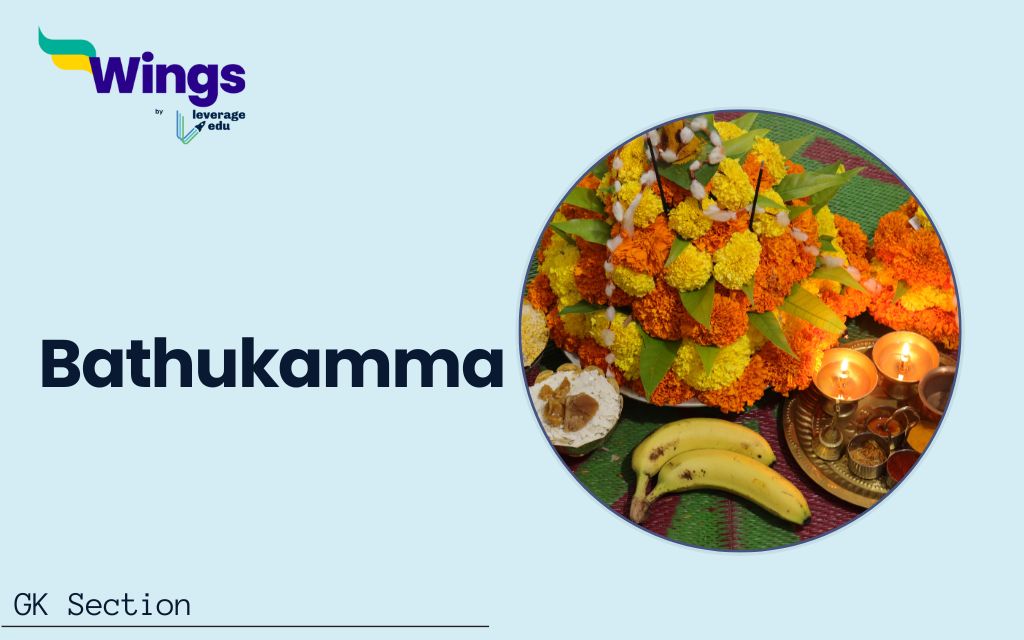India celebrates a variety of festivals that represent its cultural and regional diversity. One of these festivals is Bathukamma, which is celebrated in Telangana and Andhra Pradesh. Bathukamma is a Hindu flower festival that lasts nine days. This event coincides with the nine-day Navratri celebration and is an important part of Indian cultural identity. In this section, we will learn about the Bathukamma and its significance in Indian culture. This is an important subject and may appear in various competitive examinations, including, UPSC, SSC, and EPFO. Continue reading to enhance your knowledge about such topics.
Bathukamma is a beautiful and colourful floral festival that is mainly celebrated by women. Bathukamma marks the beginning of the Sharath Ritu and the Navaratri celebration. The term “Bathukamma” means “Mother Goddess come alive” and represents feminine power. This festival is dedicated to the Goddess Gauri.
Contents
Historical Significance of Bathukamma
Bathukamma is celebrated with dedication which reflects an agrarian lifestyle and a connection between people and nature. This event is believed to have originated during the reign of the Kakatiya kingdom.
- This festival is not only a religious celebration but also a community event that promotes social bonds among the community.
- This festival has a number of stories about its origins.
- One of the most popular stories about this festival is that the Chola dynasty’s king Dharmangada and his queen prayed to Goddess Lakshmi for a child. After their prayer had been answered, they were blessed with a daughter. The child was believed to be an incarnation of Goddess Lakshmi. Bathukamma celebrations started as a way of thanking the goddess.
- Another story claims that this festival is dedicated to Goddess Gauri. According to the story, Goddess Parvati performed meditation for the love of Lord Shiva. Bathukamma is celebrated as the day Parvati returns to her parental house and the floral arrangement represents her.
Also Read: List of Bathukamma Songs
The Celebration of Bathukamma

The festival of Bathukamma is celebrated for nine days during the Navratri Festival. This festival is celebrated in September and October. Each day of this festival has a specific name and significance.
- Engili Pula Bathukamma: This is the first day of the festival which is dedicated to the preparation of the Bathukamma.
- Atukula Bathukamma: This is the second day which involves the offering of rice to the goddess.
- Muddapappu Bathukamma: On this day, muddapappu, which are the cooked lentils and milk are offered to the goddess along with flowers.
- Nanabiyyam Bathukamma: This is the fourth day that involves the offering of rice soaked in water along with jaggery, coconut and flowers.
- Atla Bathukamma: The fifth day sees the offering of small dosas to the goddess.
- Aligina Bathukamma: This is the sixth day that represents the playfulness and joy associated with the festival.
- Vepakayala Bathukamma: This is the seventh day when neem leaves are included in the Bathukamma to represent the role of nature in providing life and health.
- Venna Mudda Bathukamma: This is the eighth day of Bathukamma which involves the offering of butter and flowers.
- Saddula Bathukamma: This is the final day of the festival which is considered to be the most important. On this day, the Bathukamma is made with multiple layers of flowers including roses, marigolds and other varieties. The women dress in traditional dresses and place their Bathukamma in the centre of the gathering. They perform various rituals such as traditional dance and folk songs related to the Goddess.
Significance of Flowers in Bathukamma
The flowers used in this event are chosen not just for their beauty, but also for their medicinal and cultural value. The importance of each flower used during this celebration is described below.
- Tanner’s Cassia: This yellow flower, also known as Thangedu, is the most important in Bathukamma. This flower symbolises the Goddess herself.
- Pumpkin Flower: These flowers also known as Gummadi Puvvu are bright yellow flowers that represent fertility and provide vibrancy to the Bathukamma festival.
- Chrysanthemum: This flower is known for its lasting freshness and is connected with longevity.
- Marigolds: These flowers are commonly used in Indian festivals and are associated with luck.
- Nandivardhana: These white flowers are famous for their smell, which represents purity and peace.
Also Read: Why do we Celebrate Ram Navami?
Cultural Impact of Bathukamma
Bathukamma is more than just a religious event in Telangana. It is a social and cultural life of the community there. It brings together women of various ages and social backgrounds which creates a sense of community. This event also encourages the passing on of cultural knowledge, with older ladies teaching younger girls the traditional songs, dances, and rituals related to Bathukama. In recent years, the Telangana government promoted Bathukamma as a symbol of the state’s cultural identity.

Modern Celebration of Bathukamma
Bathukamma is celebrated in Telugu-speaking communities around the world. This festival is also celebrated in countries such as Houston, London, and Sydney. The Telangana government has also received the designation of UNESCO Intangible Cultural Heritage for Bathukamma.
This celebration reflects Telangana’s culture and the community’s love for the environment. This festival builds social relationships while also serving as a reminder of humans’ connection to the environment. The people of Telangana worship the goddess of life, Bathukamma, and seek her blessings for wealth, health, and happiness.
Related Posts
FAQs
Bathukamma is a beautiful and colourful floral festival that is mainly celebrated by women. Bathukamma marks the beginning of the Sharath Ritu and the Navaratri celebration. This festival is celebrated in Telangana and Andhra Pradesh and lasts for nine days.
The term “Bathukamma” means “Mother Goddess come alive” and this festival is dedicated to the Goddess Gauri.
Boddemma festival marks the ending of Varsha Rutu (Rainy season) and the Bathukamma festival marks the beginning of the Sharad Rutu (Autumn season). Bathukamma is followed by the Boddemma. Both of these festivals are a part of Telangana’s cultural identity.
This was all about the “Bathukamma”. For more such informative blogs, check out our UPSC Exams Section and Study Material Section, or you can learn more about us by visiting our Indian exams page.
 One app for all your study abroad needs
One app for all your study abroad needs














